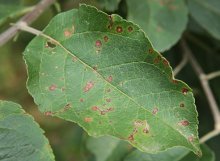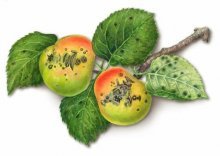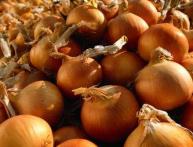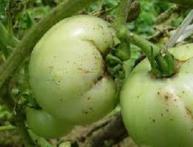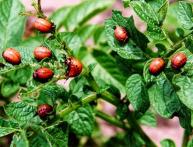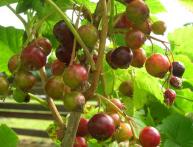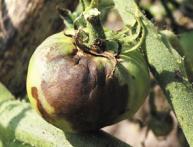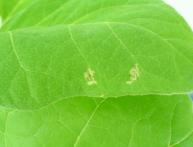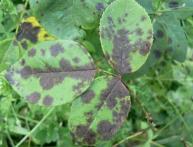Apple tree diseases and pests: you need to know the enemy by sight
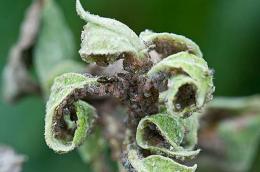
Healthy fruit trees provide harvests for decades. The quiet life of apple trees can be disrupted by pests and diseases that seriously damage them.
Content:
- Common diseases
- Apple tree cancer is a devastating disease
- Pests of fruit crops
- How to fight for the health of an apple tree?
Common diseases
All fruit trees are sensitive to fungi, bacteria and viruses. They are adversely affected by a lack of nutrients and disturbances in temperature and water conditions. A sick plant's trunk, branches and roots are destroyed, and the fruits begin to rot.
The most dangerous for apple trees are:
- Scab
- Fruit rot
- Powdery mildew
- Cytosporosis
- Bacterial burn
- milky shine
The scab pathogen survives the winter in tree bark and on fallen leaves. With the arrival of spring, spores infect young foliage: spots appear on it. At first they become translucent, then acquire a grayish tint with a touch of green. Apples covered with brown and black spots dry out and crack.
The fruit rot pathogen overwinters on fallen apples affected by miniliosis. In spring, spores develop on rotten fruits. Often the peak of the disease occurs in mid-July: a brownish spot spreads across the surface of the apples, and the pulp loses its taste.
Powdery mildew manifests itself as a dirty whitish coating covering leaves, buds, inflorescences and shoots. Later it changes color to brown with small black specks. Affected leaves turn yellow and fall off.The apples do not set because the infected inflorescences die.
With cytosporosis, the bark suffers: in places it dries out. Dark wounds form on the trunk, which quickly enlarge and change color to brown-red. The bark, along with the branches, dies.
Bacterial burns are caused by viruses. Reminds itself in July: annual growths dry out, the foliage turns black. In 2 years the tree can be destroyed. The disease spreads through affected seedlings and cuttings taken for vegetative propagation. Pests transmit pathogens.
With a milky shine, entire branches die. Sometimes the apple tree dies out entirely. Leaves with air cavities under the skin will “tell” about the damage.
The enemies of apple trees are fungi, bacteria and viruses that cause irreparable harm to the fruit crop.
Apple tree cancer is a devastating disease
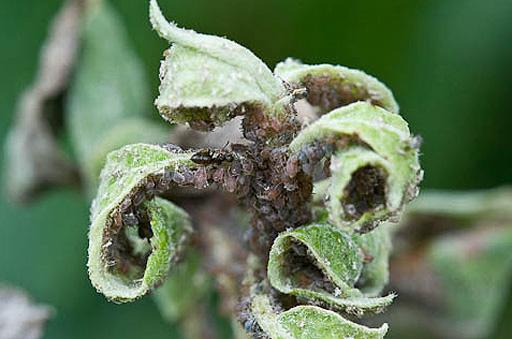
The disease is noticeable visually. The tree weakens and becomes damaged under unfavorable climatic conditions or due to improper care. A severely damaged apple tree can die within 3 years. There are several types of cancer: ordinary and black. In the first case, the trunk and crown of the tree are covered with thickenings. Sometimes the injured bark rots.
In the common form of the disease, the lesions are classified as closed (indentations form) or open (growths appear). These “wounds” are persistent formations that do not heal or disappear. The area around them becomes reddish tint and is covered with additional growths. The apple tree gets cancer due to frost. At low temperatures, the trunk cracks: it is easier for fungal spores to penetrate the crown.
A quick response at the first sign of damage will help save the tree. The wounds are covered with garden varnish or Bordeaux mixture.All affected branches are removed. They are burned by making a fire away from healthy fruit crops.
The course of black cancer is approximately the same. The causative agent of the disease enters the bark during pruning or through damage caused by low temperatures. The parasite causes dark purple spots to appear on the trunk of the apple tree. At the site of the lesion, the bark peels off and cracks.
Visually, it appears that the tree has been burnt. The blackened trunk is covered with growths containing fungal spores. The disease spreads to leaves and fruits. First, lighter areas appear on individual leaves. Over time, their middle becomes covered with dark dots. Affected foliage begins to dry out and fall off.
The same thing happens with apples. Timely disinfection of bark cracks is a means of preventing the disease. Vigorous and frost-resistant varieties are less likely to get sick. Cancer for an apple tree poses a great danger, affecting all parts of the tree.
Pests of fruit crops

Parasites damage all parts of the plant. They feed on juice from leaves, buds and buds, and nibble on apples and greens. Of particular danger are:
- Green apple aphid. The eggs survive the winter on young shoots of the plant. Reproduces at incredible speed. Large colonies live on the leaves, feeding on their sap. Affected foliage differs from healthy foliage: it is deformed, twisted and wrinkled.
- Red apple mite. The eggs of the parasite are adapted to harsh conditions: they are not afraid of frost, even -350C. They survive bad weather by hiding in the bark, near the buds, and in places where shoots branch. Larvae appear before or during flowering. They take the juice from the young leaves.
- Apple moth. For the winter, the caterpillars hide in the bark of the apple tree.After waiting for the buds to open, they appear and gnaw on the leaves. Injured greenery turns brown and dies. Adults eat leaves and form nests from cobwebs.
- Hawthorn. In autumn, the hawthorn butterfly leaves nests on apple trees - wintering grounds for caterpillars. In spring, pests emerge from their hiding places and damage the tree.
- Apple flower beetle. A brownish-gray beetle, decorated with light stripes on the underwings. In the spring, before the onset of real warmth, it appears from cracks in the bark. Damages unopened buds by gnawing holes in them.
- Apple codling moth. Dense cocoons with caterpillars hide from the winter cold in the bark and soil. When the air warms up to +100C, butterflies appear. Over the course of 30 days, they lay eggs on leaves and then on apples. The hatched caterpillars feed on the fruits.
- Apple sucker. Young insect - bright green color. Growing up, it changes to brown-yellow and red tones. The eggs hide from the cold at the base of the buds and in cracks in the bark. In early spring, the larvae damage the buds, and then the leaves and buds.
How to fight for the health of an apple tree?
Forethought and a developed plan of measures to protect the garden will help to cope with all the troubles. Tips to keep your trees healthy:
- Among the variety of varieties, it is worth choosing those that are disease-resistant and frost-resistant.
- There is no need to plant unhealthy-looking seedlings.
- You will have to stock up on insecticides and fungicides in sufficient quantities: you cannot do without spraying. Hunting belts will not be superfluous.
- Periodic inspections of trees will allow you to identify uninvited guests in time.You can use a magnifying glass: parasites are good at camouflaging themselves.
Important feed in a timely manner apple trees, monitor the condition of the soil, the immunity of the trees. In the spring they prune branches. Plants are treated with Bordeaux mixture or Copper sulfate. Insecticides are used. If the weather is rainy, there is a high probability of scab damage. You need to keep a remedy against it on hand.
In the summer, they hang traps, regularly collect carrion, and inspect the plants. In the fall, peeled bark is cleaned and burned, and affected branches are removed. Be sure to collect and destroy fallen leaves.
Systematic measures against pests and diseases will allow you to enjoy high yields of delicious fruits.
It is impossible to imagine a garden without apple trees. Home garden owners need to know how to cope with a whole invasion of pests that are ready to encroach on fruit trees.
Video about diseases and pests of apple trees:
Interesting information about the vegetable garden

